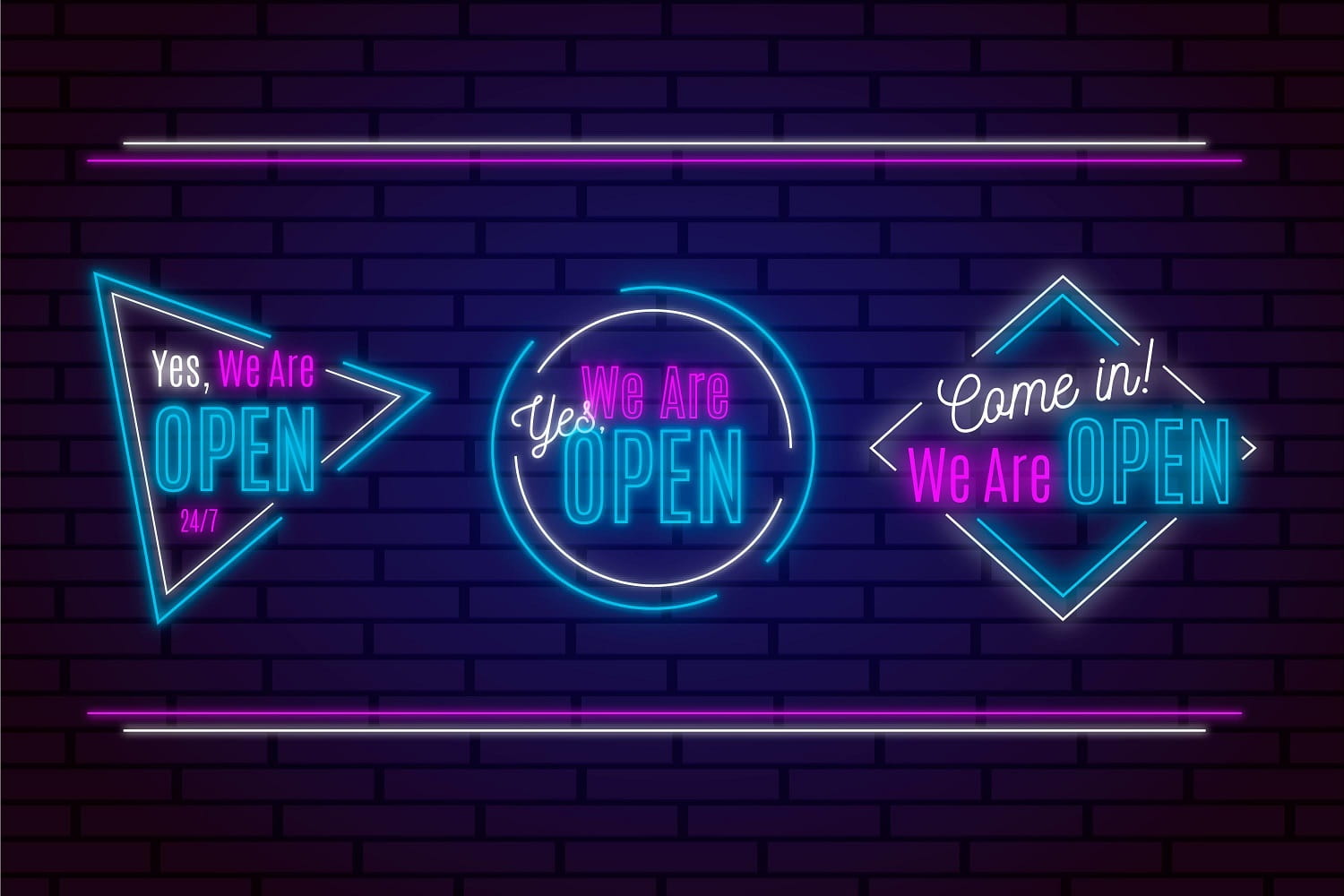Neon signs are everywhere, from the buzzing streets of city centers to cozy cafés and vibrant bars. Their distinct glow captures attention, evoking a sense of nostalgia and excitement. But what exactly makes these signs so special?
Neon signs are more than just a source of light—they are an iconic symbol of creativity, marketing, and art. In this article, we will explore the fascinating world of neon signs, how they are made, and how they have become a staple in modern advertising and décor.
What Are Neon Signs?
Neon signs are a type of illuminated signage that uses neon gas to create a glowing effect. When the neon gas is electrified, it emits a bright, colorful light. The gas is sealed in glass tubes, which are carefully bent into various shapes, often to form letters, logos, or intricate designs.
These signs can be customized to any color, with shades like red, blue, green, yellow, and pink being popular choices. The striking brightness of neon signs has made them a favorite in both commercial and artistic settings.
The History of Neon Signs
The history of neon signs dates back to the early 20th century. The discovery of neon light was made in 1898 by British scientists, but it wasn’t until 1910 that French engineer Georges Claude perfected the process of creating neon signs. He showcased the first neon sign at the Paris Motor Show, and it didn’t take long for these lights to take off worldwide.
Over the decades, neon signs became synonymous with the nightlife of major cities like New York and Las Vegas, illuminating billboards, storefronts, and even public spaces.
How Neon Signs Are Made
Creating a neon sign is a highly skilled art form. The process begins with glass tubes, which are heated and bent into the desired shape. Once the tube is shaped, it is filled with neon gas and sealed.
The tubes are then attached to an electrode at each end, and an electrical current is passed through the gas, causing it to light up. The color of the neon light depends on the type of gas used—while neon gas gives off a red glow, other gases like argon or mercury can produce a wider range of colors.
The Unique Appeal of Neon Signs
One of the most distinctive features of neon signs is their ability to stand out in any environment. The bright, colorful lights make them incredibly effective at grabbing attention, making them ideal for businesses and events that want to be noticed.
They can also be used creatively in art and home décor, adding a retro or futuristic touch to any space. Whether used to advertise a product, convey a message, or create a vibrant atmosphere, neon signs have an undeniable visual impact.
Conclusion
Neon signs have come a long way since their invention, remaining as relevant and captivating today as they were decades ago. From their historical roots to their current place in modern marketing and décor, neon signs continue to brighten up our world.
Whether you’re looking to add a touch of retro charm to your business or create a stunning statement piece for your home, neon signs offer endless possibilities. Their eye-catching glow is sure to leave a lasting impression wherever they shine.
